Randi Zuckerberg's Blog, page 10
November 22, 2017
Radio Recap: The Abraham Group + Francine Hardaway
 Known as one of the top entrepreneurial marketing authorities, Jay Abraham is the CEO of The Abraham Group, an international strategic consulting corporation that advises clients’ on how to multiply their “Relational Capital.” Jay’s clients include blue-chip companies like Fed Ex, IBM, HBO, Boeing, General Electric, Charles Schwab and Levi Strauss & Co., to name a few. Jay is a world-renowned expert in revenue and business model generation, strategic restructuring and marketing makeovers and he’s with us today to discuss his outstanding 40-year career.
Known as one of the top entrepreneurial marketing authorities, Jay Abraham is the CEO of The Abraham Group, an international strategic consulting corporation that advises clients’ on how to multiply their “Relational Capital.” Jay’s clients include blue-chip companies like Fed Ex, IBM, HBO, Boeing, General Electric, Charles Schwab and Levi Strauss & Co., to name a few. Jay is a world-renowned expert in revenue and business model generation, strategic restructuring and marketing makeovers and he’s with us today to discuss his outstanding 40-year career.
“When you lose sight of humanity and humility, you’ve lost it all.”
“I got married at 18, 2 kids at 20, the only people who were crazy enough to give me a salary we’re entrepreneurs.”
” I jumped from industry to industry. I started borrowing elements I observed in other industries and combined them. Over the years I became obsessed learning all the elements of money connection.”
“I helped create interesting products, Icy Hot, Entrepreneur Magazine (no one knew how to spell entrepreneur and no one knew what it was).”
“Today I’m interested in being a masterful thinking partner.”
“A typical day is 5 or 6 clients that we’re advancing and enhancing.”
“We do a lot of problem solving, Q & A clinics.”
“I start at 6 with Europe and end at 11 with Asia.”
“If you have a love or drive of a true entrepreneur, it’s a wonderful challenge that’s infinite. It’s a progression.”
“The work ethic is Asia and Latin America is very strong. Their education is based on memorization.”
“Everybody works in a linear form and everyone’s got a revenue system.”
“What are the primary methods any business can grow in?”
“Why should somebody trust you, deal with you exclusively? That’s what a unique selling proposition brings.”
“In the course of my life, I’ve done 500 unrelated industries.”
“You can’t deal with a complex client until they respect you and that can’t respect you until you respect them.”
—
Francine Hardaway is a content creator, marketer, mentor and coach. She’s a founding member of the Arizona Software Association, and the founder of the Arizona Entrepreneurship Conferences. The foundation she co-founded, the Opportunity Through Entrepreneurship Foundation, extends entrepreneurial resources to disadvantaged populations.
“I was all there was in entrepreneurship in Arizona for many years.”
“I’m a futurist and change junky. I have a gift for seeing what’s going to happen in the future and getting out there before it does.”
“I can embrace things that people don’t.”
“I feel bad about the Jibo Robot, it was a crowdfunded campaign. It has personality and experience that none of these other connective devices have. Amazon put the Echo on the market at the same time. They claimed the space.”
“I am not a Millennial. I am a grandmother and have all these connective devices. I’m into all this stuff.”
“I have my eye on AI and robotics. That’s the big thing that’s going to disrupt the future everywhere.”
“I coach that we’re going to have to sustain ourselves and survive. We don’t know what the jobs are that are going to be out there are. We need internal skill sets. We need personal skills that we sorely lack in the society—people skills.”
“I am not a young dude. When Google was first showing ads they’d show me things they’d show to a 35 year old guy.”
“Women with little experience can start a business. Don’t even look for a job anymore. You should start consulting with the wisdom you’ve learned from being out in the world.”
“America was founded on the principal of work. Salvation by work. We’re going to have to redefine work and success.”
“Lose the fear of tech. The world is full of people who helps others turn on technology. In the 90s I wrote a newsletter that helped my friends learn how to use email.”
“I realized my foster kids weren’t going to have the same opportunities I had in terms of education so I put them into business for themselves. One had a house cleaning business, one a handyman. I realized I should do this for others as well so I started Opportunity for Entrepreneurship to learn the skills.”
“In 2018 we will not yet see AR or VR because Apple isn’t releasing the glasses until 2019. We’re seeing a tightening in the tech market—unicorns have turned out unable to make money. There will be less emphasis on social media. We’re going to have to give news to people in bits and pieces as opposed to aggregated news sites.”
“Everyone has the potential to be some kind of entrepreneur, you just have to figure out what kind that will be.”
November 15, 2017
Radio Recap: Afrotech Conference + Furnishr

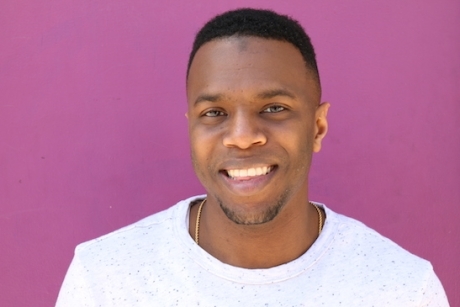 This past weekend social media was blowing up with excitement over the second annual Afrotech Conference hosted by Blavity, a black-Millennial-focused media company co-founded by Jonathan Jackson.
This past weekend social media was blowing up with excitement over the second annual Afrotech Conference hosted by Blavity, a black-Millennial-focused media company co-founded by Jonathan Jackson.
“Afrotech had over 2000 people in SF. It was amazing.”
“Morgan and my other two co-founders all went to school together. We’re all a year apart. The lunchroom had a big table that many of the black students would sit at to discuss social matters and find people who looked like us. We were wondering what it would be like to have that table on the internet.”
“Blavity ended up building up our own backend. About 60% of our content is user generated. The platform is for them. It’s for other people to have a voice. We knew what it was like not to have one.”
“We have a different model than BuzzFeed. What elicited that was the media company/creative enclave connection. We want black creatives to have a space and see what we’re doing.”
“The first Afrotech was at the Mall in SF. We had a big, big space. It opened at 9am with throngs of people waiting to get in. We wanted to see if it could resonate.”
“Diversity in tech is a good conversation but seeing a bunch of black faces and hearing what they’re doing is what I want.”
“We can just be. Our filter is lower and our expectation is higher. We’re all black but we’re trying to build things. Build the billion dollar companies. We need an Afrotech. I didn’t know I could get into tech without coding. My idea of tech was so warped before I moved to SF. ”
“This year Morgan wanted to go big. We did Pier 27 on the Embarcadero. They pull ships up to it. We focused on a lot of feedback. The room was so big last year people couldn’t find their tribe. We built out tracks. Engineering track, entrepreneurship tracks. Our CTO Jeff gave a talk about Big Data.”
“We let people mix and mingle and connect. Outside we all had all black food trucks from all over the diaspora. We wanted to make sure everything was communal. All the security guards were black. We never wanted to make sure no one felt left out.”
“We gave people a mix of inspirational and tactical information. There can be elevation collectively.”
“Apple has stores. Who’s in a store, who’s working? It’s easier to count people in the stores. I go to the leadership page and scroll. If you have black executives who are in a Chief Diversity Officer role, I’m more interested in who’s tied to the dollar and cents to the corporation.”
“We know we’re here. We need to talk about getting people in. What is your retain strategy? Have you made a safe environment that’s also brave?”
“What makes my peer set interesting is that we don’t care why things didn’t work. I have found a lot of utility in inter-generational talks. I need to know what they were doing at my age and I will tell them what is happening. A lot of leaders don’t get the right feedback. I want to have a conversation about what they think. It’s allowed us to bring in new partners, too.”
“If you’re cool with how things are you probably don’t want to change.”
Sign up for the newsletter at Blavity.com.
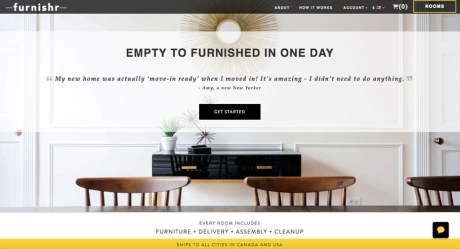
Karen Lau is the CTO and co-founder of Furnishr, a personal furnishing platform that lets customers design their home and have all the furniture delivered and assembled in a single day.
“I graduated with CompSci degree. I worked in telecommunications for years. But I started reflecting on what I wanted to do with my career. I tried to get a formal education in interior decoration at night. Furniture was an area I’ve always loved.”
“On our e-commerce site, we work with wholesalers who handle the logistics and hold everything in their warehouses. They deliver and assemble everything.”
“We moved to NYC from Toronto last year because we were accepted into an accelerator program. NY is bigger for consumer products. New Yorkers are adaptable and willing to try new things.”
“The best things about accelerators is that you immediately have a community of people helping you succeed. Entrepreneurship can be lonely.”
“We’ve been evolving our business for two years now. In accelerator programs whatever you’re building or launching is tested, changed, and repeat”
“We won $50,000 at a pitch fest. It was a 6 day bootcamp and at the end only the top companies got to pitch.”
“You have to start young. There need to be more girls in tech and in the STEM world. I feel like we need to encourage kids to know how to solve problems and get confidence from that.”
“It’s always a small group of female CTOs. There’s not that many of us.”
“We’re adding more features for a whole design creation to rely more on tech.”
November 8, 2017
Radio Recap: Leslie Picker + Why We Sleep w/ Matthew Walker
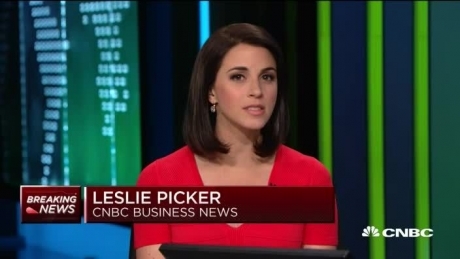
Leslie Picker is a hedge fund, private equity and asset management reporter on CNBC. Previously Leslie was a reporter at The New York Times where she covered all things FinTech including restructuring and shareholder activism. Prior to The Times, she was a reporter at Bloomberg where she reported on initial public offerings.
“I started with an internship. I had a front row seat to the beginning of the financial crisis. I thought to myself that I could provide an explanation in what was happening to people. I was drawn to the business content. I was 100% hooked on the markets.”
“I studied Post-Soviet politics so it was a big transition. I bought a Forbes guide to the market. I read this finance for dummies book. I remember reading about what an IPO was not knowing this would be my world 5 years later.”
“The more conversations I had with people in business the more it stuck in my brain. I also went to business school at night.”
“The earliest I’ll set my alarm is about 3:15 in the morning. That happens every couple weeks. Normally it’s a whopping 5:15. I spend the first hour reading, finding out what happened overnight. I go to bed at 9:30.”
“I give stock advice all the time but I’m the worst person to ask because I’m a journalist.”
“The beauty of TV is that if you want to take a week off and find something out of your wheelhouse, it’s easy to do.”
“I keep a running a document from all the crazy comments I’ve gotten. Someone opened the conversation, ‘I know you don’t know finance….’ He said that twice in the conversation. Finance is historically a male dominated industry. Also finance experts think they’re the smartest people in the room. That’s hard for women. You’re underestimated by a lot of the men you meet. I find it motivating that you can overcome their perceptions of you.”
“Cryptocurrency is fascinating. If it’s a bubble or not, I have no idea. Block chain and cryptocurrency is going to change the industry completely. The ability to track commerce better and transparency in the world of commerce is a good thing.”
“One company I’m very interested in is Stitch Fix, which is led by a woman. Only 3% of companies that go public are led by a woman. They have almost a billion dollars in revenue.”
“The low number of women who start companies and receive venture capital to go public is the reason that 3% number is so low itself.”
“Journalism is not about writing, it’s not about the way you look. It’s about your curiosity. If you have that curiosity you can tackle anything. Without it it’s a hard job. You have to love what you do. The hours are long, it’s a competitive business.”
“I love that I get to learn something new everyday and that I get to meet some of the most interesting people in the world and get in their head.”
“As an actor, you can create incentives in your mind you can become that character. As a journalist I like to think like that as well. What was going on in the mind when something happened?”
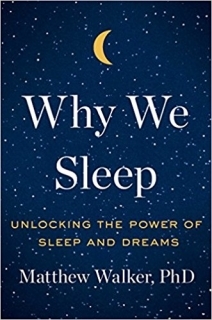 Neuroscientist Matthew Walker is the director of the Center for Human Sleep Science at the University of California, Berkeley. He recently published his first book, Why We Sleep: Unlocking the Power of Sleep and Dreams detailing the importance of getting 40 winks and then some.
Neuroscientist Matthew Walker is the director of the Center for Human Sleep Science at the University of California, Berkeley. He recently published his first book, Why We Sleep: Unlocking the Power of Sleep and Dreams detailing the importance of getting 40 winks and then some.
“All sleep scientists are accidental. No one wanted to be a sleep researcher. We fall into it.”
“We definitely practice what we do. I give myself a non-negotiable 8 hours opportunity every night. My family has a history of cardiac disease so sleep is important to our health.”
“We are in a global sleep loss epidemic. The average adult is sleeping only 6 hours 31 minutes.”
“Every disease that is killing us in the developed world has clear links to a lack of sleep. That’s why it’s one of the greatest health challenges we face.”
“You don’t know you’re sleep deprived when you’re sleep deprived. One night of short sleep is linked to numerous forms of cancer.”
“Anytime of nighttime shift work can induce cancer.”
“There’s a decrease of heart attacks when we gain an hour of sleep in the springtime.”
“Anytime that you try to fight biology, biology usually wins.”
“If you’re traveling there are some things you can do to fight jet lag: Try using melatonin. Take it a couple hours before you sleep. Get lots of sunlight. Drench your brain with darkness as the sun sets.”
“I’m not anti-medication in any way, but sadly no medications we have produce classic sleep. Sedation is not sleep. I’m not going to argue you’re awake, you’re not. It’s a falsehood though. Sleeping pills are associated with a higher risk of death and cancer.”
“You can’t pay off a sleep debt. Fat cells are our credit systems. Human beings are the only species that deprive themselves of sleep for no apparent reason.”
“Caffeine and alcohol are the two most misunderstood when it comes to sleep. Caffeine keeps us awake, it blocks the sleepiness in your brain. Even if you fall asleep with caffeine swilling around in your brain, you wake up not feeling as refreshed so you have to have two cups of coffee.”
“Alcohol fragments your sleep. You wake up more. You will feel unrefreshed. It also blocks your REM, your dream, sleep.”
“Sleep does decline and deteriorate with age. It’s a myth that older adults need less sleep. The problem is that the brain cannot generate the sleep it still needs.”
“We need to rethink sleep and education. In counties where they’ve pushed start times academics have changed.”
“I think tech will be the salvation of sleep. That tech genie is out of the bottle! I’m excited where we can go. Meditation can help sleep as well!”
November 1, 2017
Radio Recap: Distraction + Focus w/ Nir Eyal and Curt Steinhorst
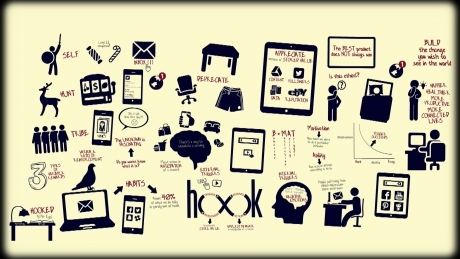
Dubbed the “The Prophet of Habit-Forming Technology” by the M.I.T. Technology Review, Nir Eyal writes and teaches about the intersection of psychology, technology, and business. He’s spent several years consulting for the tech industry, teaching techniques he developed by closely studying how Silicon Valley giants operate. He’s also the author of the Wall Street Journal bestselling book, Hooked: How to Build Habit-Forming Products.
“I started a couple of tech companies. Gaming companies are experts and manipulating you into how to keep playing.”
“Habits really matter. I wanted to allocate my human capital. I knew habits were going to be a big deal. I was trying to figure out how tech companies got us hooked.”
“The Hooked Model has 4 steps, Triggers (external triggers and internal), Action( simple behavior like scrolling a feed), Reward (how it makes us feel), Investment (product companies are co-creating products with the user through data). Now you’re not using the externally, it’s also internal. Purely out of habit.”
“The title ‘Hooked’ is read bait, I want people to improve people’s lives. Far too many products suck, versus too many products suck us in. The vast majority of apps in the App Store stink.”
“What comes at the end of GoT is a cliffhanger. It’s an emotional investment that you’ve made.”
“We cannot separate what makes something fun from what makes it addicting. It’s a function of progress. Do we want to go back before the iPhone? Not really?”
“Persuasion vs. coercion-both are forms of manipulation. TV lets you be manipulated, that’s persuasion, same with a fitness app. People want to do it, tech is helping. Coercion is when you get people to do things they don’t want to do. It’s unethical, it’s bad for business.”
“The common misconception outside of Silicon Valley is that the founders got lucky. Nothing could be further from them truth. That’s part of good product design. Symbolic systems is the integration of psychology and technology.”
“What’s the habit you want to change? If you don’t start with that, everything falls apart.”
“It’s important to remember to supplement not replace our personal relationships. When we came here we didn’t know anybody. Why don’t we do what they did on Friends, so we put flyers in everybody’s mailbox to come by and nobody came in our entire building. I was miserable. So we had to find other outlets. We started a small group of couples and started a kibbutz. No weather, no sports, one person was assigned to bring the topic of conversation. We had to exclude distraction, tech and kids. What we lost when we had kids. We lost half our adult friends. Kids can come but they can’t pull you away. It was a real bedrock of our life.”
Curt Steinhorst is on a mission to rescue us from our distracted selves. Having spent years studying the impact of tech on human behavior, Curt Steinhorst is a distraction expert and founder of Focuswise, a consultant agency that equips organizations to overcome the distinct challenges of the constantly-connected workplace. Curt’s also the author of Can I Have Your Attention? Inspiring Better Work Habits, Focusing Your Team, and Getting Stuff Done in the Constantly Connected Workplace.
“The book went straight to Number 1 on Amazon in our category, which is really exciting.”
“It’s really easy to acknowledge the challenge. What are ways, as leaders in particular, to get productivity out of people who have Netflix when they’re supposed to be looking at a spreadsheet.”
“I’m a Distraction Expert because I’m the most easily distracted. It’s a merger of personal and professional traits. I have ADD. I jumped into the speaking world and was coaching people. Over time my personal ADD was face-to-face with my work in communications. It became the only conversation clients wanted.”
“I teach teams how to work and think differently.”
“Multi-tasking is the best option, but we need to know the moments we have to be focused.”
“Biggest challenge is the volume of communication. We send messages without consequence when we get frustrated when messages come in without consequences.”
“When we add social messaging it doesn’t tend to reduce email. It increases digital communication.”
“People blame Millennials but the older generations are responsible for the synonym that availability equates to hard work.”
“A big percentage of the workforce feels exhausted.”
“Multi-tasking is not a myth depending on what tasks your trying to pair.”
“When you have your headphones in and listening to white noise, great. A podcast and work, neither is benefitting.”
“An employer has to set ground rules. When should we be present. How to delineate between important messaging and none.”
“The employee needs to create space for the not-available, they have to differentiate what is not important.”
“Inbox Zero is not important. It can be the best way to avoid hard work.”
“I use a program called Freedom which turns off the internet.”
“We live in a world that is the finite but have the infinite available to us. We’re going to avoid the thing that is infinite to spend time with the finite. (i.e. a Seinfeld episode over playing a game my son finds fun).
“Gen X per hour spends more time per week on digital media, and Boomers spend more time on tv. Every single person of every single age are moving toward the digital age.”
October 27, 2017
Radio Recap: JED Foundation + Fhitting Room
 Suicide is the 10th leading cause of death in the United States, but for 15-24 year olds, it’s 3rd. Studies show that at least 90% of teens who kill themselves have some type of mental health problem, such as depression, anxiety, drug or alcohol abuse, or behavior problem. On average there are 121 suicides a day and over 100,000 a year. In 1998, Donna and Phil Satow lost Jed, their youngest son, to suicide, two years later they founded The Jed Foundation to help launch a blueprint for suicide prevention. Today, JED is the nation’s leading nonprofit organization dedicated to young adult mental health. Here with me today to discuss the great work JED is doing across the country is CEO and Executive Director, John MacPhee.
Suicide is the 10th leading cause of death in the United States, but for 15-24 year olds, it’s 3rd. Studies show that at least 90% of teens who kill themselves have some type of mental health problem, such as depression, anxiety, drug or alcohol abuse, or behavior problem. On average there are 121 suicides a day and over 100,000 a year. In 1998, Donna and Phil Satow lost Jed, their youngest son, to suicide, two years later they founded The Jed Foundation to help launch a blueprint for suicide prevention. Today, JED is the nation’s leading nonprofit organization dedicated to young adult mental health. Here with me today to discuss the great work JED is doing across the country is CEO and Executive Director, John MacPhee.
“I started my career in business. I worked for Phil when Jed died. I decided I’d rather work in the non-profit world. Mental health, addiction have all affected my family as well.”
“Phil and Donna at the time of Jed’s death were worried about him but they did not know that he was a threat to himself. There was no system or blueprint to connect those dots. That’s how Jed was created and to work with schools to raise awareness.”
“Through campaigns we help spread teen and young adults awareness to mental health. It’s okay not to be okay. We help with what to do with a friend in distress and speak with high schools and colleges so they are equipped to deal with these issues.”
“Set to Go programs are prepping students get ready for college, including independent living skills. Like social emotional skills, can they take care of themselves, cook, clean. Are they ready to go to college instead of getting caught up in the stress.”
“If you have a gut feeling, you’re most likely right. If you feel close enough you should ask if someone is okay and if you can help. If you’re uncomfortable doing that and you’re worried about them, get help.”
“It’s helpful to start from a place that everyone struggles. It happens to all of us.”
“We’re running a program called We’ve Got Your Back, and raffling off signed backpacks. The idea was started by someone in our Student Advisory Board.”
“The Jed Foundation is one of the charity partners of Dear Evan Hansen. We just love the show. It does a great job of capturing teenage angst.”
“I walk a lot. I find it to be very therapeutic.”
“Offering mindfulness classes, or Headspace is great app. We have employee yoga classes. In the employment space one of the most important things is a sense of belonging. Foster that sense of belonging. Everyone has a role in that.”
“When we look to reach young people, we look to our partners. We’re a mental health partner with MTV.”
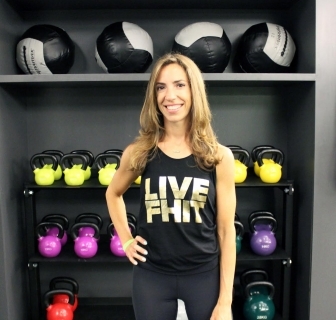 KARI SAITOWITZ is the founder of the Fhitting Room, a New York City gym that provides personalized high-intensity training in a boutique group exercise environment — a style that comes off like a mix between bootcamp class and CrossFit.
KARI SAITOWITZ is the founder of the Fhitting Room, a New York City gym that provides personalized high-intensity training in a boutique group exercise environment — a style that comes off like a mix between bootcamp class and CrossFit.
“I worked at Amex doing strategic planning, and after business school I worked at Pepsi. I made Superbowl ads and launched products and doing consumer research. Within my 5 years of Pepsi I became focused on new platforms for consumers. I dove into 360 marketing. So then, big life change, I decided to stay at home after I had children. I spent a lot of time at home on the floor. It was when I started working out with a personal trainer which was my only two hours alone for the week. I stayed with that trainer the results were amazing. I was eating kid-friendly food but I was still in the best shape of my life. Especially when I was going to the gym 5 days a week before and eating healthy and never as healthy as I was with the trainer.”
“I always say I was an accidental entrepreneur. I loved working for big brands that let me explore and I wasn’t planning on going back to work. I kept thinking about how much I was enjoying working out with a fitness trainer but my friends loved their fitness classes. I wondered why people were doing both. Can people get a personal trainer workout in a class dynamic.”
“My husband went to business school kept asking if I wanted my own company, and I said NO. But I knew I had a good idea. My husband said stop talking about it and figure out how great of an idea it is.”
“Real estate was the biggest question. I walked into a hair salon. I could picture the gym there.”
“When I filled in the blanks of insurance, how much to pay trainers, became the business model.”
“After many sheets of terrible names for the gym, it came to me in the shower. I needed part of it to be literal and it had to sound fanciful so I could hear it come out of the name of a friend. I looked up what was out there. Flywheel and SoulCycle, Barry’s Bootcamp. There were bits of what happened in their classes in the brand. FHITTING ROOM can get thought of as a literal term, where you go to fit. But it’s also a place where people get changed: the fitting room.”
“My trainer worked with another instructor for a big box gym. They put together a program for us. I knew they could bring together all the fitness expertise as well as connect with clients on a personal level.”
“Everybody’s biggest surprise after class is how fun it is. People are intimidated by high intensity training. It’s a serious workout but meant to fun and entertaining. We move our bodies the same way our bodies move in real life. There’s nothing you don’t do in class that you don’t mimic in every day life.”
“The more muscle you have the leaner you look and the more metabolism you burn. If we keep doing the same thing, your body plateaus. In 5 years we’ve never done the same routine twice.”
“We tested the concept and trainers first.”
“We built the customer base came through the trainers, my personal network, schools.”
“The early days when you first open are really scary.”
“We set a benchmark, when the attendance is over X a week, we’d open another location. It happened quickly. We signed a lease for a second location within 6 weeks of the first location. The third location was bigger than the first location but in the same neighborhood, so we closed the first one down.”
“Be open minded to conversations and opportunities. There are so many people thinking through different ideas all the time. My friend who helped me get the Fhitting Room of the ground and launched held me accountable for my ideas. She asked if I looked at real estate, and so I did.
Radio Recap: Aprés Group + TEDWomen
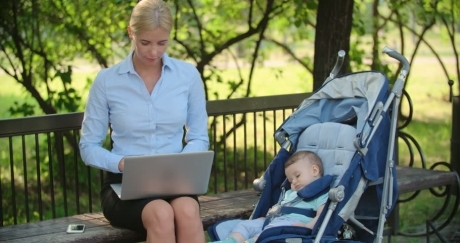
According to a study published by the Harvard Business Review, 37% of qualified women leave their jobs for extended periods of time and, of those women, only 40% find full-time jobs again. 23% find part-time work, 7% are self-employed, and 30% don’t return to the workforce at all. Based on graduation rates, the percentage of women that opt out of the workforce, and the percentage of those women that opt back in, my first guest today estimates that there could be over 3 million women with college or advanced degrees trying to find jobs. Today discussing getting back into the workforce is the Co-Founder of Aprés Group, Jennifer Gefsky, and Amy Nidds, Corporate Liaison of Aprés.
“One of the reasons I started Aprés because it’s my own story. I was focused on my career. If you would’ve asked me at age 30 if I’d ever stop working, I’d say NO.”
“Women can relate to the fact that when you have kids, it’s hard not to opt of the workforce for at least a short amount of time.”
“I knew I had to step away when I had a toddler and baby at home. I was traveling so much I never saw my kids or husband. That was my aha moment. Every woman’s journey is different. I know a lot of women who have stopped working, and a lot of women who have. We are our own worst enemies. We shouldn’t judge.”
“When my third child was three years old I knew it was time to go back.”
“There were so many smart, capable women looking to get back into the workforce but didn’t know how.”
“If you’re a woman thinking about returning to the workforce, our website is set up to read success stories, plus how-tos for if you’ve been out of the workforce for a long time.”
“Our job is to help educate about what it takes to get back into the workforce.”
“If you have PTA on your resume, there’s a huge chance that resume will go in the trash can. But if you put “I raised $100,000 for our local school” then that’s a transferable skill. Don’t run away from the gap, we get it, there’s a time away from work. It’s okay.”
“Life experience is so important. It’s great to have someone in your company who left the workforce and came back. Attract the Millennial generation to your company by welcoming women with families back in.”
“There are people who have a lot of career experience under their belt. It’s great for an employer to have on their team.”
“Some of the most impressive women with the most impressive pedigrees lacked confidence. When you go out of the workforce you start to think you don’t have value. Instill that confidence by taking classes.”
“Women are innately programmed to compete. When you compete you judge. That is one of our biggest enemies is our judgement of each other.”
“It’s important to make career decisions with your eyes wide open. Many women are too tired, stressed or spent to make giant career breaks. “Salaries don’t cover babysitters,” I hear that all the time. But the exponential loss of salary is really going to make an impact. Before making the decision have all the facts and know what you’re up against.”
“There’s nothing more difficult than being a stay-at-home parent.”
“Know the price you’re paying for what you’re doing, keep a foot in the door. Do something once a week to keep going.”
“For women going back to work: Just get started. Start researching, build your confidence. Good things start to happen when you just put yourself out there.”
“I worked on the trading floor with demanding hours. When I got pregnant and I decided to opt out. I wish they would come up with some sort of job sharing. Trading floors are not conducive to having families.”
“As my kids got a little older, I became the go-to person in town to find a deal A friend started a local business that used my skills and taught me digital media skills.”
“I let people know I wanted to go back to work. You have to let your friends and any connections know that they want to go back to work.”
“I wouldn’t say I regretted leaving the workplace, but I regret not having a foot in the door.”
Pat Mitchell is the curator and co-founder of TEDWomen, which she founded in conjunction with TED Conferences. Pat was the first female President and CEO of PBS and former President of CNN Productions where she received 35 Emmy and five Peabody Awards. The 2017 TEDWomen Conference celebrates its sixth year this November in New Orleans.
“I followed my curiosity. When I felt like I mastered my job I felt it was time to move on. My husband jokes I do things in 7-year cycles.”
“Every time a door opened, I went inside. That’s how I found television. Carving my own path going to interesting jobs is what I did.”
“I’ve been going to TED conferences for some time. In a conversation with some of the women at TED, I said I don’t see enough women on the TED stage. There was a lack of pipeline so I offered to help and started a conference that shows women scientists, doctors, activists—women with good ideas that needed to be shared. Out of those 150 talks that happened the TEDWomen in 2010, most ended up on the TED website. It was hard to turn down the offer to continue in 2013.”
“There’s a qualified woman to talk about whatever the field or idea.”
“You can say how much of a life-changing experience being on the TED stage is, but when it happens it’s so much more than that.”
“A man got the first standing ovation at the TEDWomen conference.”
“We had one talk where a woman was raped by her high school boyfriend and both of them were onstage discussing the sexual violence epidemic in the world. They did something no one ever did before. They freed each other of the blame chain.”
“We have a lot of architects and physicians, but I’d love a WOW technologist for TEDWomen.”
“After all the NOs, inevitably you come to the YES.”
“I get to hear other women’s stories and the obstacles. Every one of those gives me inspiration.”
“Let’s listen to each other’s stories. Let’s support each other and whatever path we’re on.”
October 11, 2017
Radio Recap: Tony Horton + WNET Channel 13
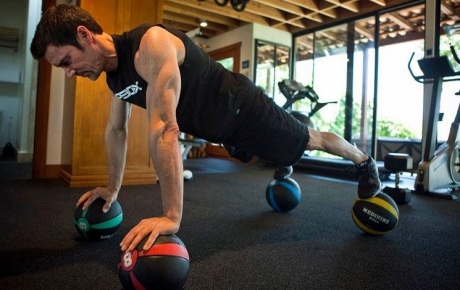
Tony Horton is an elite fitness trainer perhaps best known for his P90x, 1, 2 and 3 exercise videos— a series that have sold a combined total of 7 million copies and counting and have completely revolutionized the home workout. Tony trains everyone from celebrities to congressmen (Paul Ryan is a total Tony Horton fan boy). He’s also got a new line of self-care products on the market along with a new home workout!
“I have a heck of a team behind me. When I came out to LA in the 1980s I wanted to be an actor but now I know I’m helping people struggling with health and fitness.”
“Fear was a major factor for me as a kid. I had a speech impediment and lived through the bullying years. I was on the football team and was more a tackling dummy. Fitness was a hellscape for me.”
“At college I didn’t know anything about nutrition but I took a weightlifting class and started feeling better, my GPA went up, I was waking up early and feeling great.”
“I started training my boss at 20th Century Fox. Tom Petty was first celebrity client. He said, “Tony I’m fat I’m going on tour.” I got him on the bike and having him lift heavy weights. He went off and did his tour and then the phone didn’t stop ringing.”
“I was a mime at the pier on the weekends, waiting table, then all the sudden I’m training rock stars.”
“Stand up comedy toughens your skin.”
“7 million copies – it’s been an amazing ride.”
“The message and the messenger are critical.”
“When I had this teacher at URI he made working out fun. He told us to enjoy the journey. It was his encouragement and his humor that kept me coming back.”
“I don’t know how I got the title of America’s Fitness Clown. I don’t know if it’s a good thing or a bad thing.”
“I try to create the same vibe in all of my programs. Humor was my strategy. If I can get them to laugh maybe they won’t beat me up so much.”
“A lot of people want to be in this industry so they use tricks to jump in the fray. To avoid boredom, injury and plateau I get people to always work on my weaknesses. Like cardio and yoga for a weight trainer. There’s nothing worse than getting bored to death and your knees are killing you. You have to open yourself up to other types of training.”
“I’m 59 years old and I got these kids running backwards behind me.”
“I know you hate yoga, if you just stay in the moment and stay present and do the best you can, the power of yoga alone can change you.”
“A purpose, a plan, and accountability – that’s what it takes to make fitness a lifestyle. People exercise for their ego and aesthetic change.”
“The past is a history, the future is a mystery.”
“The book Spark talks about the effects of fitness on all aspects of the body. Emotionally, physically, mentally.”
“Your purpose is I want to do better things in my life and feel better into your 30s, 40s, 50s and beyond.”
“A plan is simple. Write down what you’re going to do and when you’re going to do it.”
“I train with other people 6 days a weeks. Surround yourself with people who want to do it too.”
“Even professionals in the industry are still struggling with fitness.”
“In the past you buy a home workout, it’s all fitness models. I put in modifications and made pilates instructors do weight lifting and vice versa.”
“I do ski trips in Jackson Hole where there’s a lot of yoga and fitness.”
“I’ve got an apparel line and skin care line and a partner workout coming out November 1st.”
—
 In 2012, WNET celebrated the 50thAnniversary of THIRTEEN, New York’s flagship public media provider. WNET brings quality arts, education and public affairs programming to over 5 million viewers each week, producing and presenting such acclaimed PBS series as Nature, American Masters, and Charlie Rose. With a range of documentaries, children’s programs, and local news and cultural offerings available on air and online, WNET are pioneers in educational programming, and proud to be part of PBS, which recently won 12 awards—more than any other broadcast, cable and broadband entity—at this year’s News & Documentary Emmy Awards. With me today to discuss public broadcasting and the success of WNET is Chief Marketing and Engagement Officer, Kellie Castruita Specter. But first it’s time for like or dislike.
In 2012, WNET celebrated the 50thAnniversary of THIRTEEN, New York’s flagship public media provider. WNET brings quality arts, education and public affairs programming to over 5 million viewers each week, producing and presenting such acclaimed PBS series as Nature, American Masters, and Charlie Rose. With a range of documentaries, children’s programs, and local news and cultural offerings available on air and online, WNET are pioneers in educational programming, and proud to be part of PBS, which recently won 12 awards—more than any other broadcast, cable and broadband entity—at this year’s News & Documentary Emmy Awards. With me today to discuss public broadcasting and the success of WNET is Chief Marketing and Engagement Officer, Kellie Castruita Specter. But first it’s time for like or dislike.
“I started my career in radio in NorCal at a rock station. I was there for 5 years and got hired away by a station in LA. Then I fell in love and moved to Chicago and worked for A&M Records. I went on the road with David Crosby. It was a great time to be in my 20s.”
“After some life changes I moved to New York City and a friend of a friend invited me to interview for a publicity job.”
“I got to WNET about two years into Barney. I don’t think anyone knew it was going to be the runaway hit it is.”
“The workforce is made up of human beings. To work with people and understand where they’re coming from is all about psychology.”
“We’re governed by a board of trustees. We’re a nonprofit.”
“There are about 400 people who work for WNET.”
“What keeps me up at night: There are a lot of balls in the air with my particular job + someone in the administration might not continue our funding.”
“They vote on our funding in December. If it doesn’t pass we won’t be funded past 2020.”
“We do something that no other broadcaster does, we bring free, educational programming to the masses. We bring arts and culture to the underserved, to those who can’t afford it.”
“Social media has changed everything. People are engaging with you right now on a different platform. We launched THIRTEEN Passport, if you go to Boston, you can join their Passport. For a $60 yearly donation you can get geo-located content where ever you go. It’s like Netflix but for PBS.”
“With the Nature series we partner with the BBC. We have many different partners but we do a lot of our own productions.”
“I love the sheer curiosity in broadcasting. Learning from everyone around you. Find a specific path. If you’re a digital marketer, broadcast is a great way to go.”
“I remember when Sirius launched I thought, “who would pay $9.99 for radio” and now look!”
“Emotional control is something I’ve practiced my entire life. My knee jerk reaction is not the reaction I want to put out there. I have to sit on myself. I try to listen.”
“Our culture is all instant now. You do this to me and I’ll do this to you.”
“Some of our programming is subtitled. The most successful program we have is an online show that teaches kids how to say things in Spanish.”
“Our Great Performances for the next seven weeks we have a different Broadway show each week. No commercial breaks.”
“We have Edgar Allan Poe coming up on American Masters.”
October 6, 2017
Radio Recap: Dashlane + C3 Foundation

If the Equifax hack has taught us anything, it’s that online security is still anything but secure. With a new hack or breach making news almost daily, people are constantly being reminded about the importance of secure passwords, yet some are still not following proper password protocol. Enter Dashlane which allows users to securely manage passwords, credit cards, IDs, and other important information via advanced encryption. Dashlane has helped over 3.8 million users manage and secure their digital identity, and has enabled over $4.5 billion in e-commerce transactions. Discussing Dashlane and the fate of online security and Equifax is Dashlane CEO Emmanuel Schalit.
“When you run larger companies you’re always frustrated because older corporations are hard to change. You want to hire the people you want to hire. Starting a company from scratch is a next step.”
“I was 10 or 12 when I was reading incomprehensible science books and I found it to be so beautiful.”
“3 billion of use the internet everyday and 3 billion of has internet security problems. It’s exciting to find a universal problem that needs to be solved.”
“The recognition that this was a problem technology can solve. I like nothing more than taking a complicated problem and finding a simple solution.”
“The biggest misconception about passwords is that create the biggest
“The only thing you can do as an individual is have a different password everywhere.”
“Dashlane gives you a tool that you install that makes managing passwords incredibly simple. You don’t need to know your password anymore.”
“These large, powerful tech companies have a role in this. If they allow users to have passwords 1,2,3,4,5 they are part of the problem. Why do some companies care and why don’t others?”
“Apple is at the extreme end of being security conscious. Amazon let’s you use any password you want.”
“Equifax is still being investigated. Chances are something sophisticated didn’t happen. Like the presidential campaign. The source of the hack is a previously stolen password.”
“Companies are in the business of storing and using consumer data.”
“Our customers give their app the identity data. It does not come through us. There is nothing to hack for us. What they would get is jibberish.”
“We’ve all been hacked. The important question is when will I know and how will it affect me. It will be hard to know because sometimes it’s an account you never use.”
“Common sense things like regularly looking at your credit score and your credit card statement. We all have to watch through our email.”
“Our phones have biometric systems. Facial recognition is there for convenience.”
“Imagine 3million biometrics have been stolen not 3million passwords.”
“Biometrics should never be used as a total security system because it can’t be changed.”
“Digital identity crosses the boarder between home and work.
“Protect companies by giving them a product that they like and use.”
“Identity is something you need to share. People need to share the company Twitter password. With Dashlane 2.0, if someone changes the password everyone’s knows.”
“Always be suspicious when you receive an email that asks you to do something.”
“If you live in a world where you don’t have to think about these things, we all live in a better world.”
—
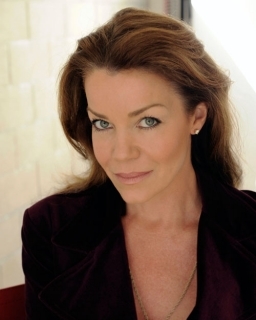
Claudia Christian may be best known for her role as Commander Susan Ivanova on the science fiction television series Babylon 5 but her main work is done publicizing treatment for alcohol dependency, as told in her book Babylon Confidential, a book which recalls her own experiences with alcoholism. In 2014, Claudia produced a documentary titled One Little Pill about her C3 Foundation, which she founded helping others fight the disease.
“I spent an extraordinary amount of money on rehab. I researched and found that alcoholism is a brain disorder. The problem isn’t going away.”
“After I found a treatment that worked for me, the Sinclair Method, I opened up the C3 Foundation.”
“Rehab doesn’t do anything to change the brain. It doesn’t treat the biological.”
“Give people options. If meetings don’t work, rehabs don’t work. The judgement hurts the addict. We need to remove the shame.”
“Everything we do at C3 Foundation, we do for free.”
“We’re currently doing a physician outreach to spread awareness. I spoke at DC in front of the senate last year. I would like to see Naltrexone over the counters.”
“I became a drug and alcohol counselor in the UK.”
“I always thought being an actress was a very selfish career, but I was raised to help each other. I knew I’d have to diversify to voice work, I started writing books. I’m far more satisfied than waiting for the phone to ring. The joy of helping others or saving lives has made my life have meaning. When I found something that worked for me I wanted to spread it to others. I know the shame of it. I feel huge compassion for them.”
September 27, 2017
Radio Recap: Wheels Up + Dr. Joel Fuhrman
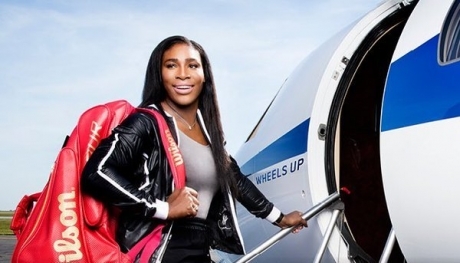 Private aviation-membership company, Wheels Up, launched in August 2013, and by the end of 2014, Wheels Up had already signed up 1,000 members who can all book a closed-fleet of private planes through their mobile app at a flat, all-inclusive hourly rate. Wheels Up offers two different types of membership programs, Individual/Family or Corporate Membership and both types of aircraft in the Wheels Up fleet have many amenities including, room for up to nine passengers, premium leather seats, a full lavatory, onboard entertainment systems, satellite WiFi, power outlets at every seat, blankets, Bluetooth, and a conference system. Founder and CEO Kenny Dichter is here with me today to discuss the democratization of private aviation.
Private aviation-membership company, Wheels Up, launched in August 2013, and by the end of 2014, Wheels Up had already signed up 1,000 members who can all book a closed-fleet of private planes through their mobile app at a flat, all-inclusive hourly rate. Wheels Up offers two different types of membership programs, Individual/Family or Corporate Membership and both types of aircraft in the Wheels Up fleet have many amenities including, room for up to nine passengers, premium leather seats, a full lavatory, onboard entertainment systems, satellite WiFi, power outlets at every seat, blankets, Bluetooth, and a conference system. Founder and CEO Kenny Dichter is here with me today to discuss the democratization of private aviation.
“You can’t fight technology, if I’m going to have tech, it’s going to be a balance of power.”
“Our Wheels Up pilots’ uniforms could be interactive.”
“Some of the best work in the world has been done in the bathroom. You brain is free of everything else.”
“I wanted to create the Starbucks card of private aviation.”
“Wheels Up is more Netflix than anything. Shared economy, shared rides.”
“We think this is a $50 billion dollar space. We’re broadening the space and making it available to more people.”
“We have two tiers of membership. It’s $17,500 to join as an individual. And $29,000 for corporation.”
“The flying SUV is our King Air. We own that plane exclusively.”
“In private aviation there’s only one SUV. We own it.”
“$4295 per hour for 8 people. Less than $500 a seat.”
“Before I was in private aviation I was sold a company to ClearChannel. It became Live Nation today.”
“Flying privately is better than private publicly.”
“I started my private aviation career as a steward. It was my introduction. I knew I wanted to get out of music and marketing and into private aviation.”
“I’ve taken 3000 private flights. It’s control, predictability, luxury. Efficiency with our time. TSA keeps people safe, but it’s a pain.”
“We’ll exit 2017 with 4000 members. We have 25 hours or more fliers and just bought our 80th plane. We’re really in the first inning of what we’re doing.”
“Brands are service. The Four Seasons you know what you’re getting. Good service = anticipation. You have to anticipate what your client wants before they order it. That’s hospitality.”
“Never give up. No never means no, it means not know. You got to be able to pivot. Everyday I pivot.”
“Yesterday’s business plan is obsolete today.”
“Costco sells value, Wheels Up delivers value. They said it was a natural partnership with Costco.”
“If the Wright brothers were looking down, they’d approve the Costco partnership.”
“Amazon would not be Amazon if it didn’t take 10 years selling books.”
“Thomas Edison said, “I don’t want to invent anything that doesn’t sell.””
“The first private jet ride I ever went on was a loaner jet. I was hooked right away.”
—
Dr. Joel Fuhrman is a former competitive figure skater turned world-renowned physician. His practice is based on his “nutritarian’ nutrition-based approach. He has written several books promoting his dietary approaches and his 2013 book Eat to Live was on the New York Times bestseller Paperback Advice list for 90 weeks. In 2016, Eat to Live with Dr. Fuhrman premiered across the nation on PBS.
“My primary focus was ice skating, training 6 hours a day. Most of my high school and college life was skating.”
“My real passion was in nutrition. My father was sickly but he got better through nutrition.”
“I met my wife and she was going to medical school. I was jealous. She told me to quit everything and go back to school, so I did.”
“The medical system is insane and people don’t have informed consent. We keep people sick by drugging them into sickness.”
“I decided to write books and do research to have society adopt the beliefs I had.”
“I have 6 NYT bestselling books. I raised over $30 million for PBS tv and have helped thousands of people reverse chronic illness.”
“I was satisfied helping people to the best of my ability. It’s still a process trying to inform people.”
“Fast food is highly addicting. People can’t get off the foods and feel sickly.”
“It would be very hard to be too focused on fitness and health considering how obese this country is.”
“You can overexercise. It can become too much of a stress on your body. Especially as they get older.”
“I want exercise to be fun, and most people don’t get enough of course.”
“The facts show that one serving of french fries a week increases your chances of breast cancer 20%.”
“Two servings of commercial baked goods a week increase the risk of depression by 51%.”
“People don’t realize that tastebuds improve.”
“I disagree with the theory that you can eat TOO healthily.”
“Too much attention to nutritional excellence is like saying you can too kind.”
“You can change later in life. Heart disease is 99.9% preventable.”
“As far as cancer is concerned, common cancers are preventable with a healthy life. The more exposure to processed food in earlier life, the higher your risks of cancer are.”
“Early stage cancer can see reversals with the nutritarian approach.”
“I want a woman’s body fat below 23% and a man’s below 15%.”
“The average American woman weighs over 160 and the average man over 180.”
“We lose weight in the kitchen and gain weight in the gym.”
“Have a big salad once a day as a main dish. We have to have a pound of raw veggies a day. Make the dressing healthy, not the oil and sugar kind.”
“Make a big pot of mushroom and bean soup.”
“Lunch is the most important meal of the day. You’re out in the world and exposed to temptation.”
“Raw greens and raw onions have powerful effects against cancer.”
September 20, 2017
Radio Recap: Bark + Amy Silverstein
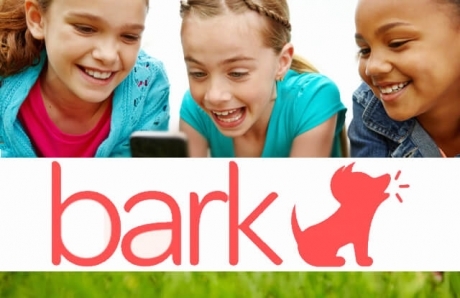 It’s every parent’s fear that their child will be the victim of cyberbullying and when it comes to the internet, kids are at-risk for bullying 24/7. So what do you do to protect your kid from cyberbullying, or from bullying others? Enter Bark, a safety solution for parents to help protect their children online. Bark’s watchdog engine uses algorithms to look for a variety of potential issues, such as cyberbullying, sexting, drug-related content, and signs of depression. Here with me to discuss the rise of digital parenting tools is Bark CEO, Brian Bason.
It’s every parent’s fear that their child will be the victim of cyberbullying and when it comes to the internet, kids are at-risk for bullying 24/7. So what do you do to protect your kid from cyberbullying, or from bullying others? Enter Bark, a safety solution for parents to help protect their children online. Bark’s watchdog engine uses algorithms to look for a variety of potential issues, such as cyberbullying, sexting, drug-related content, and signs of depression. Here with me to discuss the rise of digital parenting tools is Bark CEO, Brian Bason.
“I started out doing software development, then went into the startup world and then had kids, so that’s how I got to Bark.
“Whatever your child has online, Bark monitors those 24 hours a day.”
“We encourage parents to talk to their kids about online safety besides just monitoring.”
“We alert parents if their child is the bully and present recommended actions which range from talking to their child to other resources they might need to get help.”
“We’ve analyzed over half a billion messages. We’ve got very good at picking up on subtleness. Words are very context heavy.”
“We view as what were doing as spot checking. We don’t give parents full unfettered access, only what they need to know. So kids report more privacy because their parents are reading everything all the time.”
“We have a CPO (Chief Parenting Officer).”
“Atlanta is a large city and active investor population. Tech Village is the 4th largest tech co-working space.”
“We do a lot of whiteboarding, and try to keep up with the way children speak.”
“We’ve had a ridiculously high amount of meetings about emojis, more than any company should have. We have to understand the text alongside the emojis.”
“Talking to kids is first and foremost the best thing you can do. Asking questions about what kids use can help. There’s nothing better than talking with your child.”
“We applaud anyone doing work in the children’s safety area.”
Amy Silverstein is the author of My Glory Was I had Such Friends, a memoir about nine friends credited with saving Amy’s life when she had her second lifesaving heart transplant at age 50. The memoir is about the power of friendship and the resilience of the human spirit, My Glory tells the story of the extraordinary group of women who supported her through as she waited for the transplant to come through. And, if this story isn’t inspiring enough, just two days after publication of her memoir, JJ Abrams, of Star Wars and Westworld fame, acquired the rights to the book to develop as a limited series.
“I had my first heart transplant at 25. I found out I was in heart failure with a 10 year life expectancy. I was determined not to have that be my life expectancy.”
“At 26 years post transplant which is rare for hearts. But I needed a second heart and had to travel to LA to get the transplant. And my girlfriends created a spreadsheet so someone could stay in a cot next to me the entire time.”
“With Sick Girl I decided I wanted to write honestly from a patient’s perspective. I wasn’t living very healthily during those first 26 years. It was lonely and painful.”
“With My Glory I knew I had to write something about how miraculous it was. When you’re 25 you’re not the same kind of friend you are at 50.”
“It showed the change in friendship between 25 and 50. We know how to nurture and show up for each either.”
“It focuses on what each one of these women brought to me. We’re all living a different life now. We’re able to put ourselves aside to take what we’ve learned and help.”
“My friends would email each other about what to bring and what they needed to bring to help.”
“In the digital age, I talk about my friend Val who was one of my law school roommates. When I speak with Val, which is almost nightly. All we can do is hear each other. It’s different to hear and not see each other. Val could hear I wasn’t doing so well. She could “see” me in a different way than my friends could. Having that distance on phone, or text, or email can help bring a more real idea of what the friend is going through.”
“I was really dying out there. I turned quickly when they came to see me.”
“My friends kept me alive to receive that organ. I couldn’t do it without them.”
“I think my friend surprised themselves. There was something about it, sort of a pay it forward sort of thing.”
“I think you can form close friendships at any age. I know this because I met a few women who became great friends.”
“My oldest friend Jill from the second grade. Two from law school, two from my husband. One was a situational friend. She came every single day while I was there for two and half months.”
“People can rise up especially when it’s to save someone’s life.”
“As I was writing, I thought this could make a good movie scene. CAA read it quite early and waited until it was published. One night the phone rings, it says Bad Robot and it was JJ Abrams. He is so personable. He does a lot of male oriented stories with strong female characters built in there. This will be a limited TV series.”
“I think a lot of true friendship means showing up. That means putting your tech aside and using your legs. It’s so easy to send an email or shoot a text. Especially hard to show up at the door when you haven’t been welcomed.”
“I had friends who entered my house and sat on the couch and said I didn’t have to talk to them.”
“A lot of friendship is just showing up. As we get older we show up in a more complete way.”
“I wasn’t a super friend either at 25. At middle age you’ve acquired these tools where you can show up for someone.”
“A friend reached out today and wanted to stop by but my first reaction was don’t stop by because it’s easier to do through an email or text. But I said, “No, come on over.” It feels great when you give them a hug.”
“This heart is very powerful. I can feel the difference between this 13 year old’s heart and the last one.”
“I hope people feel less alone. I hope I say things in an honest way. We all have OCD ways that you line up your life. I put them all out there warts and all. I hope people feel that they’re not the only one coping. I think the more honest a writer can be, the more useful the book can be to others.”

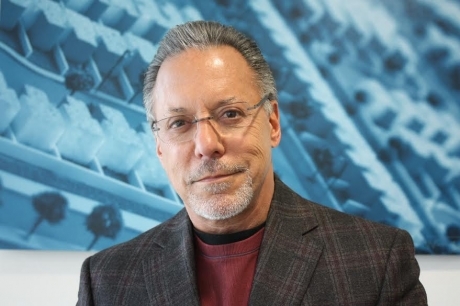 JAY ABRAHAM
JAY ABRAHAM
 FRANCINE HARDAWAY
FRANCINE HARDAWAY
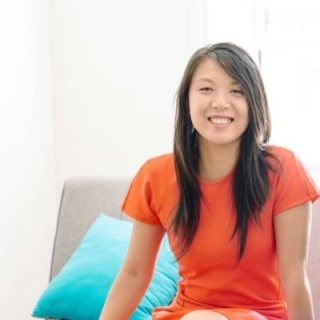 KAREN LAU
KAREN LAU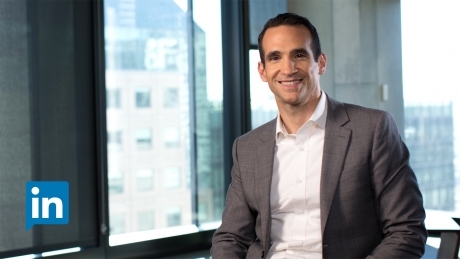 NIR EYAL
NIR EYAL
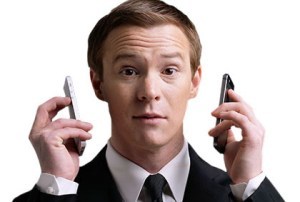 CURT STEINHORST
CURT STEINHORST
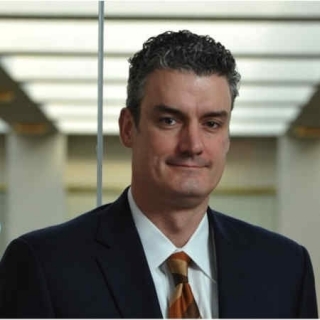
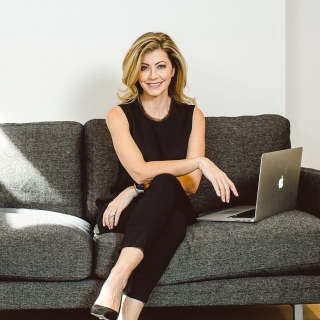
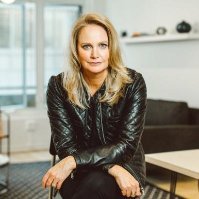
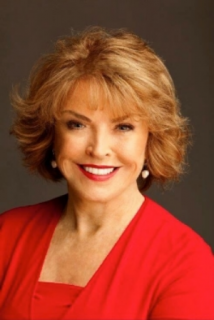
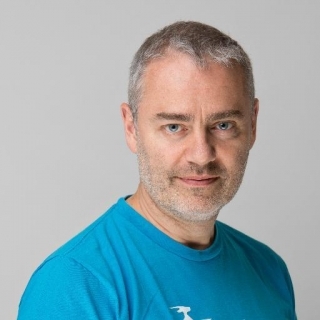
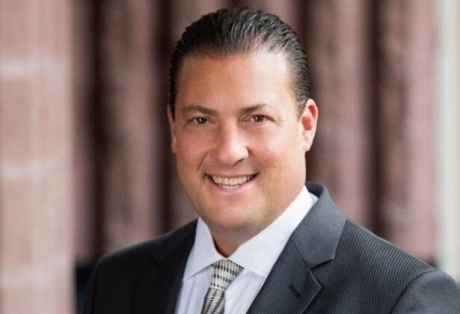 KENNY DICHTER
KENNY DICHTER
 DR. JOEL FUHRMAN
DR. JOEL FUHRMAN
 BRIAN BASON
BRIAN BASON
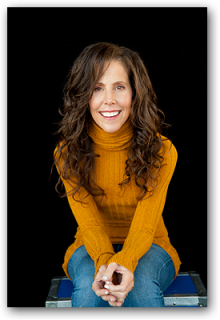 AMY SILVERSTEIN
AMY SILVERSTEIN


